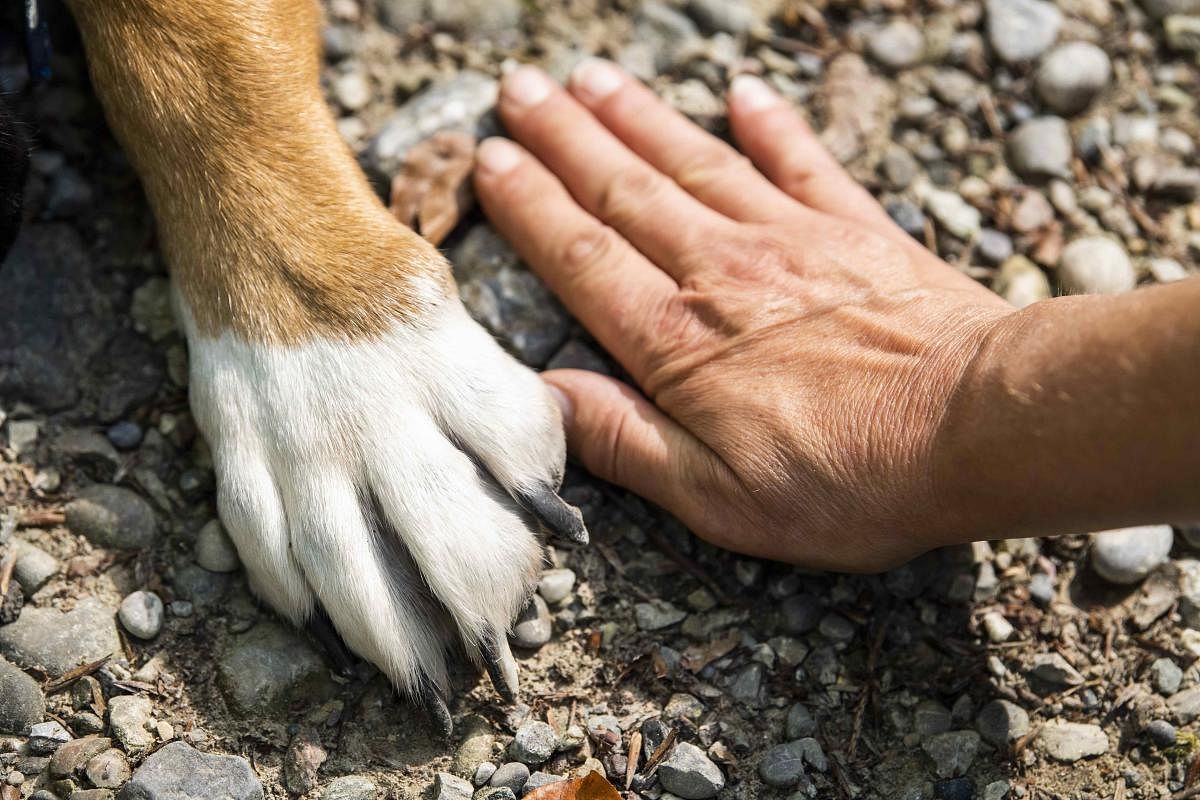
One hot summer evening, we were heading home from our usual evening stroll at the park. A young kid, probably excited about seeing a dog, ran towards us from nowhere with his hand stretched to pet Pippi. Before I could say no, he was so close that I had to pull back Pippi’s leash. Terrified at seeing the kid shouting and zipping towards him, Pippi barked and lunged, and thankfully the kid stopped in his course, quite shaken. Disaster averted. Alerted by the commotion, his mom, who was lost in her own world until then, started hurling abuses at me! My attempts at reasoning fell through, and we moved on with a muttered apology. Well, it’s always the dog’s fault, right?
This incident could have ended far worse. Pippi is not a fan of unsolicited touch, especially from strangers. Well, none of us are, and shouldn’t be. He is also not a fan of noisy kids running frantically. Pippi likes his personal space, and we mostly respect that. There are days when I have an unstoppable urge to pet him and he responds with a lip-lick — a tense face in human parlance — and I back off.
That’s not to say Pippi is averse to touch, he loves it, even from strangers. But, it needs to happen at his pace. No frenzied movements and no jarring noise; just calm, gentle strokes, and only when he approaches them. We would never force him to get petted by anyone. When he wants our touch, he gently rubs his snout or his body against us or shows his belly for a pat. He turns into the happiest dog on earth when we oblige and makes an irresistibly cute face. Get any closer, or give him a hug — that face soon shrinks and tenses up.
But shouldn’t dogs be all happy and excited with hugs and cuddles and kisses? Isn’t that the idea of dogs we are fed in movies, TV shows and social media posts? Random people approach the dog, who is wagging its tail and craving attention.
Kids are shown being all over the dog’s face — putting their hands into the dog’s mouth or pulling its ears — and the dog endures it all like a rock. When it sees another dog, it immediately wants to jump and play like they have been best friends for years, ignoring the natural instinct of being cautious, sniffing or barking at each other.
Our perceptions and expectations of pets have been heavily influenced by such portrayals. Anything outside (yet, natural) of these behaviours is labelled ‘bad’ or ‘aggressive’ or ‘reactive’ and suddenly, the dog has ‘issues’.
A matter of perceptions
Such perceptions highlight our ignorance about humanity’s best friend, and what rigid training routines, mostly coupled with punishments, can do to a dog’s natural behaviour. Studies show that most dogs feel stressed when approached head-on, when bent over to pet, or when their faces are touched extensively.
A 2016 study, which analysed Internet pictures of people hugging dogs, found that over 80% of the dogs showed signs of stress like turning their heads away, lip-licking, showing ‘whale eyes’ or lifting their paws. It’s possibly because hugging feels very restrictive to movement, say the researchers. But, people hugged the dogs anyway and got their snaps.
Dogs, like people, aren’t the same stoic beings every single day, and depending on what else is going on in a dog’s life at that moment, such unsolicited attention can go horribly wrong—ending with punctured bite marks on the person’s face and severe consequence for the dog, including death.
Let them choose
Cats, too, have preferences about how they want to be touched and are easily irked by a wrong move. If you have ever been clawed by a cat after ample belly rubs, you know how that feels! Studies show that the best way to gain a cat’s love, and not be a victim of its aggression, is to pet them less, let them choose when to be petted, and only touch the base of their ears, cheeks and their chin, avoiding the legs, tail or the tummy.
It’s an uncomfortable idea in the human world for animals to have agency. But that’s what animals, including our pets, instinctively do. A free-living dog or cat, like the ones we see on our streets, will unapologetically growl or hiss — and if provoked further — bite to assert their space.
Often, without getting into the “why”, we chase them away and deem them ‘aggressive’. Our pets, unfortunately, can’t get away that easily — they are forced to be on their ‘best’ (in our opinion) behaviour all the time, despite what we do to them.
As the ones who have decided to bring them into our lives, the onus is on us to understand the nuances of canine and feline behaviour, recognise them as individuals who have the right to say no, and respect their consent. That, to me, is the foundation for building strong, trusting relationships between individuals. Would you agree?
Tailspin is your monthly column on everything that’s heartwarming and annoying about pet parenting.
The writer is a science communicator and mom to Pippi, a five-year-old rescued Indie, who is behind her drive to understand dogs better. She tweets @RamanSpoorthy